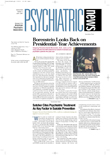Ever since 1929, a number of American and European investigators have found an intriguing link between being born in winter and having schizophrenia. In other words, they have found an excess in birth rates of schizophrenia patients during the winter.
But what happens in those parts of the world where there is no winter similar to that experienced in the Northern Hemisphere. Schizophrenia, of course, occurs there, too.
In fact, for what appears to be the first time, a tropical rainy season has been linked with schizophrenia births, strengthening the case that climate plays a role in at least some cases of schizophrenia.
The finding comes from Erick Messias, M.D., a psychiatry resident with the Maryland Psychiatric Research Institute (which is part of the University of Maryland Medical School in Baltimore), and his colleagues. Their study appeared in the April/May Schizophrenia Research.
It all started back when Messias was in medical school in Brazil, his native country. Because of the numerous links that had been made in the United States and Europe between winter births and schizophrenia incidence, Messias asked himself: “What happens here in northeastern Brazil, where I come from—a geographic area where there are only a wet season and a dry season, with temperature pretty much the same all year? Since the effect of seasonal variation on schizophrenia seems to be due to seasonal variations in infectious diseases, and since there is a known link between rainfall and flu cases in Brazil, might the rainy season in Brazil increase a risk for schizophrenia, just as winter seems to do in the Northern Hemisphere?”
After he joined the Maryland Psychiatric Research Institute, Messias was able, with the help of colleagues both at the institute and in Brazil, to test his hypothesis. They decided to focus on the city of Mossoro, which is in the state of Rio Grande do Norte in northeastern Brazil. The city’s rainy season occurs each year from January to May, with the heaviest rains occurring in February and March. There is little precipitation during the rest of the year.
They then obtained the birth records for 2,500 persons who had been diagnosed with schizophrenia at the Sao Camilo de Lelis Hospital in Mossoro between 1964 and 1994. That hospital is the city’s only psychiatric facility. Messias and his coworkers also obtained the birth records for the general population of Mossoro during the same years. They then attempted to see whether they could find a statistically significant association between rainfall by month with the births of schizophrenia patients by month.
The researchers found a significant relationship between the number of schizophrenia births per month and the amount of rainfall three months earlier—in other words, a burst of schizophrenia births during May and June had been preceded by a peak in rainfall in February and March.
They also attempted to see whether they could find a statistically significant relationship between the number of births in the general population and the amount of rainfall three months earlier. They could not.
Thus, there indeed seemed “to be a correlation between schizophrenia births and rainfall, and it seemed to have a three-month lag,” Messias told Psychiatric News.
But why would Mossoro women who were in the fifth or sixth month of pregnancy during February and March be more likely to give birth to children who would later be diagnosed with schizophrenia than would Mossoro women who were in the fifth or sixth month of pregnancy during other months? In brief, how might the rainy season jeopardize their fetuses?
An Australian scientist who heard about the findings of Messias and his colleagues commented, “I don’t think the culprit is rainfall per se; I think it is a decrease in sun exposure during the rainy season. As a result, women in the fifth or sixth month of pregnancy during the rainy season are not getting enough vitamin D, and inadequate vitamin D could lead to a calcium deficiency, and this deficiency in turn might have an unfavorable influence on fetal brain development. Thus, if pregnant women ingested more calcium during Mossoro’s rainy season, would they be less likely to bear children at risk of schizophrenia? It is a possibility, Messias told Psychiatric News.
But what is more likely, he thinks, is that women who are in the fifth or sixth month of pregnancy during Mossoro’s rainy season are especially in danger of being exposed to an infectious agent that could hurt their fetuses’ brains. And what might this agent be? Messias suspects the influenza virus since a number of scientific studies have connected flu exposure during gestation with schizophrenia risk and also because there is a known link between rainfall and flu cases in Brazil.
“Maybe the relationship we have found between rainfall and schizophrenia,” he said, “is really a proxy for the relationship between influenza and schizophrenia.”
Alan Brown, M.D., a psychiatrist with the New York State Psychiatric Institute, is familiar with the research by Messias and his team.
“I think this is a potentially important study,” he told Psychiatric News, “because it examines the possibility that exposures associated with excessive rainfall, such as infectious diseases, may play a role in schizophrenia in subjects who were in utero during rainy seasons. Few studies of in utero exposure to infection have taken place in tropical regions; most have been in highly industrialized countries.”
E. Fuller Torrey, M.D., executive director of the Stanley Foundation for brain research in Bethesda, Md., and a schizophrenia epidemiologist, is also familiar with the study by Messias and his colleagues. He told Psychiatric News, “I think it is very respectable research; it is certainly not traditional research, but the kind of research that we should probably be doing more of.” ▪
